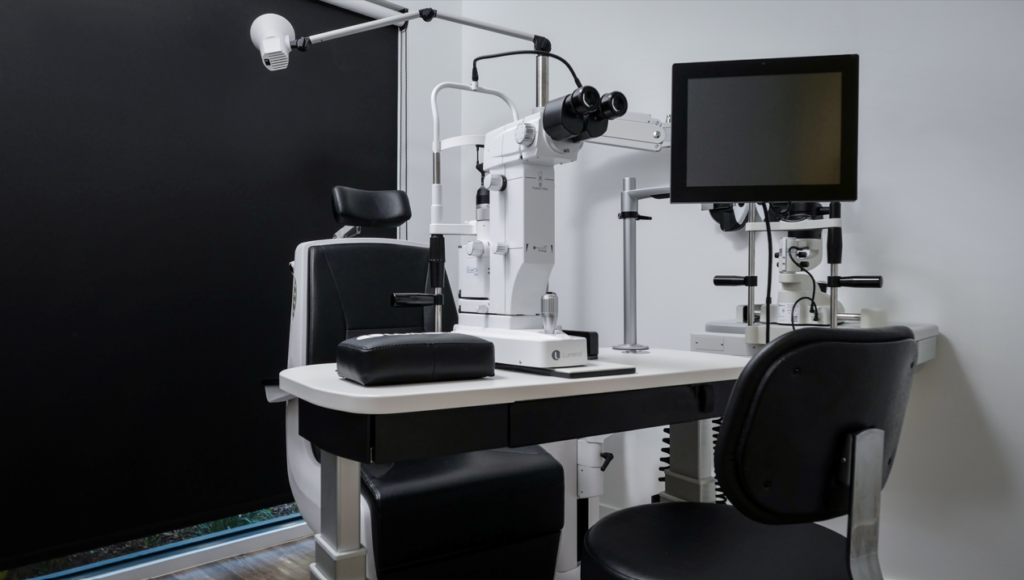YAG Laser Capsulotomy
What is a YAG laser capsulotomy?
A YAG capsulotomy is a safe, simple laser procedure commonly performed after cataract surgery. The treatment is used to improve your vision after cataracts have been removed. YAG is short for yttrium aluminum garnet, a synthetic crystal that powers the laser energy.
At Ginsberg Eye, YAG Capsulotomies are done in-office at a time that is convenient for you. It is a walk-in, walk-out procedure. Once the procedure is done, you can go on your day as if nothing was done.
Why would I need a YAG laser capsulotomy?
During cataract surgery, the cloudy lens is removed from the eye and replaced with a clear, artificial lens, known as an intraocular lens (IOL). The new plastic lens is inserted into a thin membranous bag, also called the lens capsule.
The back portion of the capsule typically remains clear after cataract surgery, but in some patients, it can thicken and grow cloudy. As a result, it becomes more difficult for light to properly reach the back of the eye. This clouding of the lens capsule is referred to as posterior capsule opacity, or PCO, a common sequela of cataract surgery. It is also known as a “secondary cataract.” PCO can lead to misty vision, glare, or night halos after cataracts have been removed.
YAG laser capsulotomy is the only procedure used to treat posterior capsule opacity after cataract surgery. This noninvasive procedure involves applying a laser beam to the posterior capsule, which creates a small hole in the center. The tiny hole allows light to pass through and reach the retina at the back of the eye, which results in clear vision.
What happens during the procedure?

A YAG laser capsulotomy is a quick, painless in-office procedure. We will administer eye drops to dilate your pupils, as well as anesthetic eye drops to numb the surface of the eye. You’ll be seated in front of a special machine that contains the YAG laser.
Once the laser is properly positioned, quick pulses of laser energy are applied to the center of the posterior capsule, behind the IOL that was implanted during cataract surgery. The laser energy eliminates the tissue of the clouded capsule, restoring a clear line of sight. The results of the procedure are apparent almost immediately.
How long does it take?
The entire procedure usually takes less than 2 minutes, and due to the anesthetic eye drops, you’ll feel no pain. Once the procedure is complete, you’ll return to the waiting room, where you’ll be scheduled for your follow up visit. You may then go home.
What happens after I go home?
Some patients experience blurry vision for 4-6 hours after the laser treatment. Some patients will notice a few new floaters which should resolve over the following day or two. You can continue with the rest of your daily activities right away.





